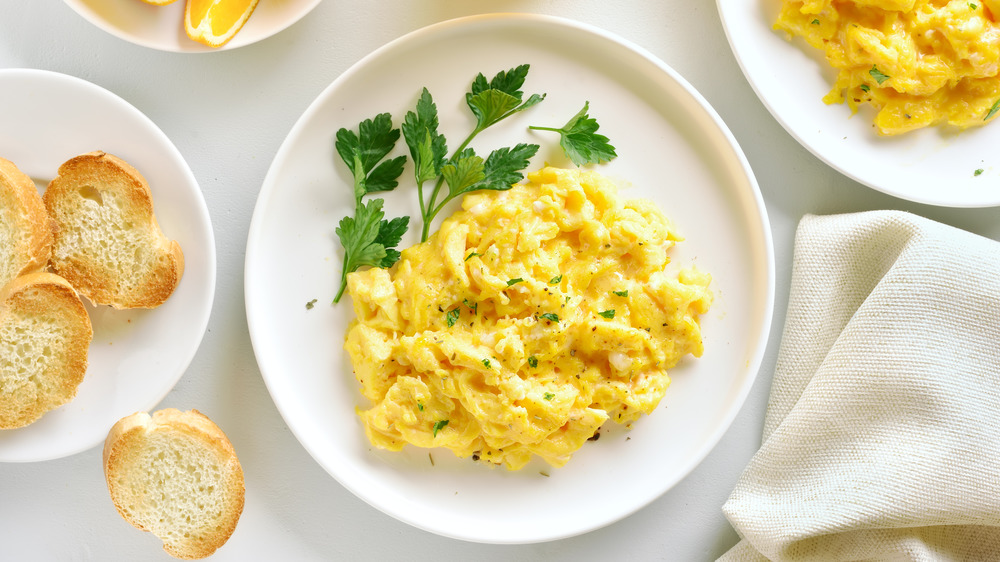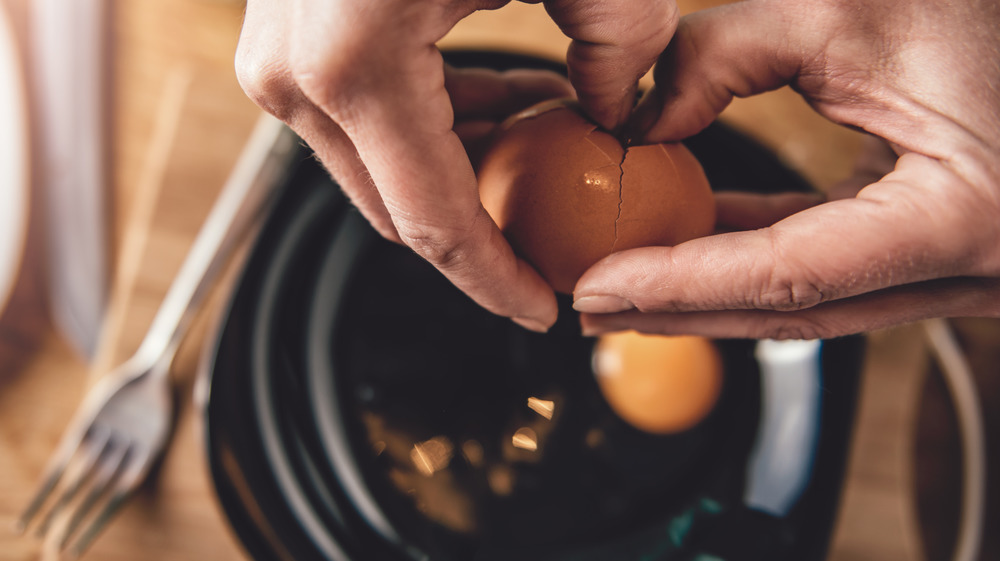High Heat Vs Low Heat: What's Really The Best Way To Cook Scrambled Eggs?
Scrambled eggs are one of those foods that most people think they can pull off — eggs and heat, how hard could it be? But when you're presented with a plate full of the good stuff, it might finally come to you: You've been doing it wrong the whole time. Perfect scrambled eggs can be next-level: creamy, moist, and most of all, fluffy — never crumbly or dry. It's hard to truly mess up scrambled eggs, but it's even harder to get them to custard-y perfection.
The key is in the technique, and the most crucial element is heat. If you've ever tossed beaten eggs into a smoking pan sizzling with butter, you'll know what we mean. The bottom of the eggs can brown almost immediately, leaving the top uncooked until you mix the eggs and end up overcooking everything to a dry, flaky crisp. The secret, egg scramblers, is low-to-medium heat and some patience for eggs that are never browned (via Culinary Institute of America).
Low heat is only part of the egg journey
Unless you're Gordon Ramsay, soft and creamy eggs come from low, continuous heat. Ramsay breaks all conventions by cracking eggs straight into a pot (a pot!) with butter and stirring over high heat, on and off the stove, until the eggs have just set and formed tiny, fluffy curds (via The Daily on YouTube). This technique will require a lot of moving and stirring — but still, the eggs are never on direct high heat for long. Other techniques, like Serious Eats' simple recipe and Inspired Taste's scrambled eggs, lead to eggs with bigger curds but the same creaminess.
In these recipes, you mix the eggs beforehand until they're just blended, add a little salt, and maybe, but not always, a little bit of milk. You melt some butter in a pan on medium to low heat and stir the eggs in the pan until they're a little bit set. The thing to remember with scrambled eggs is that time is of the essence — one minute too long, and you'll have overcooked eggs — so keep in mind the "carryover cooking" that happens in the pan once you take it off the burner. Opt for a bit undercooked, according to Inspired Taste, and you'll have silky, creamy eggs.

